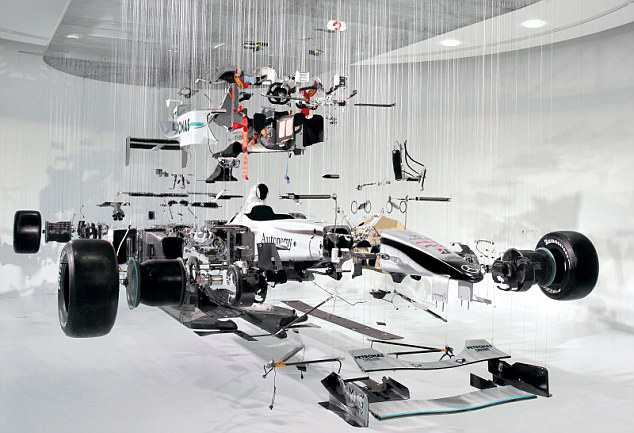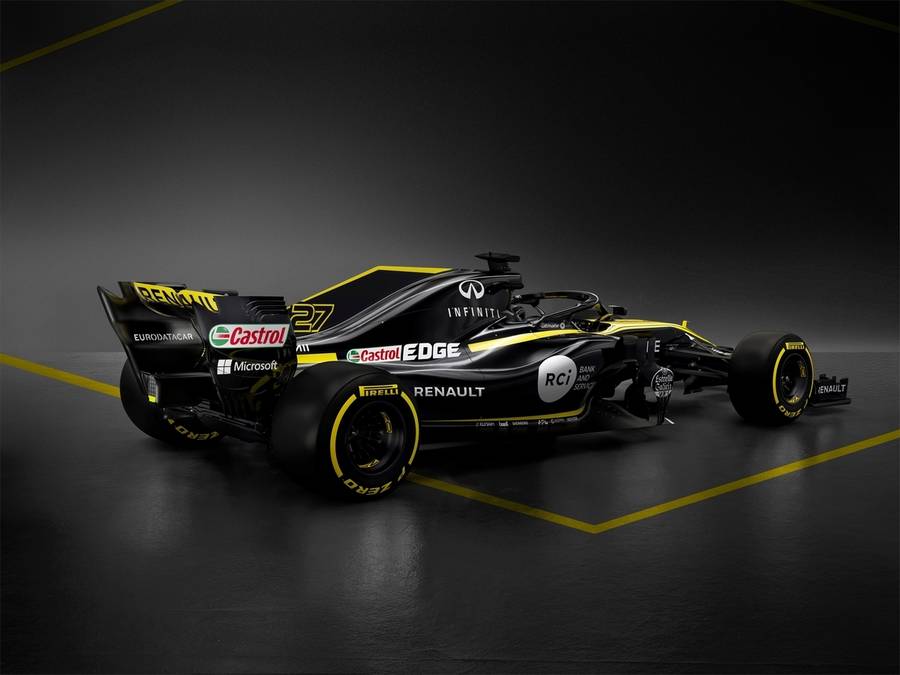

F1 Engine Specs 2020 How Powerful Are Formula 1 Engines

Commuting to work in a lacklustre run-around, you may think your life is far removed from the likes of lewis hamilton or sebastian vettel with their multi-million pound cars and jet-set lifestyle. but your car probably already shares some te. More formula 1 car technology images. Here are six new car technologies that might not be offered on all vehicles. at the very least, however, this list can serve as a glimpse into the future of some cool, make-it-simple car technologies. by edmunds. com edmunds. com today's be. Aug 30, 2012 · modern formula 1 cars use 2. 4 litre v8 engines which are limited to revving upto 18,000 rpm and consume 450 litres of air per second. race fuel consumption is typically around the 75 litre per 100 km.
The reason behind the biggest spike in traffic deaths in 50 years isn't some big mystery. completely buried by the news avalanche of the last couple of weeks was this below-the-fold new york times headline: “biggest spike in traffic deaths. Mar 04, 2016 · formula 1 cars have been using large engines powered by 4. 5 liter and now modern versions of formula 1 cars had their engines formula 1 car technology streamlined, so they are using 1. 6 turbocharged liter with v-6 engines. we see this downsize in sedan car engines. whats even more, formula cars were using kinetic energy systems. it enable driver short bursts on demand.

Formula One Car Wikipedia
Car technology speeds up pcworld.
May 15, 2018 · formula 1 loves a big number, whether that’s the $8bn liberty media paid for control of the sport last year, 6g cornering forces, or 230mph top speeds. and there’s a tantalizing one about to re-enter the f1 vernacular: 1,000bhp. Formula 1 racing is a widely popular motorsport that has captured a global audience across europe, asia, australia and north america. learn more about formula 1, including the location of the f1 usa grand prix. The early concept stages of the 2019 formula 1 car technology cars will have generally been pencilled-in around the end of 2017 when the broad outline of the ’19 regulations were known. but the concepts and development paths each of the teams were on with their previous cars will still have formed the general foundation and informed certain critical choices. Formula 1 didn’t stopped producing and paving way in industry for the future as it continues to do even today. for example we could take a better look under hood. formula 1 cars have been using large engines powered by 4. 5 liter and now modern versions of formula 1 cars had their engines streamlined, so they are using 1. 6 turbocharged liter.
Elements in a formula 1 engine there are six primary components in a modern f1 power unit, which comprises the engine. the most significant is the internal combustion engine (ice), which connects the chassis to the gearbox. the second component is the turbocharger (tc), which manages air density to generate extra power in the engines. Elements in a formula 1 engine there are six primary components in a modern f1 power unit, which comprises the engine. the most significant is the internal combustion engine (ice), which connects the chassis to the gearbox. the second component is the turbocharger (tc), which manages air density to generate extra power in the engines. Jan 26, 2018 · formula 1 is often talked about as a breeding ground for automotive technology, which had us wondering about some of the most interesting innovations that have been churned out by this racing.
Hybrid F1 Power How Does It Work Car Magazine
Apr 04, 2017 · for over 60 years, formula 1 teams have developed, tested, and built the fastest and most technologically impressive cars the world has ever seen. Formula 1's hybrid engines explained how so much power is eked out of 1. 6 and how e-power comes to the rescue. f1, they say is the pinnacle of motorsport, using the most advanced and expensive. In the market for a new (to you) used car? it’s no secret that some cars hold their value over the years better than others, but that higher price tag doesn’t always translate to better value under the hood. in some cases, the “value” of a. Get an in-depth understanding of the technology behind electric cars. get an in-depth understanding of the technology behind electric cars. this course is part of a professional certificate freeadd a verified certificate for $99 usd it is r.
The technology behind formula 1 cars (part 1).
For over 60 years, formula 1 teams have developed, tested, and built the fastest and most technologically impressive cars the world has ever seen. Sustainability formula 1’s technology goes beyond the 21 grands prix and 20 cars on the grid. in fact, much more than lap times and trophies. this is how f1 tech makes the world a better place.
How formula one technology improves your road car modern f1 cars are a world away from our everyday road cars, but grand prix manufacturers like mercedes and ferrari increasingly use race. Formula one cars the formula one cars use v8 engines that are capable of producing over 900 horsepower. find out how formula one cars harness such tremendous forces. advertisement by: william harris fundamentally, formula one cars are no. Top 10 coolest formula 1 technologies and why they matter to you kers. when an f1 car slams on the brakes at 200 mph, a serious amount of kinetic energy is bled away. what if it were j-damper / inerter. a race car’s suspension needs to be as stiff as possible to enhance aerodynamic performance as. Modern formula 1 cars use 2. 4 litre v8 engines which are limited to revving upto formula 1 car technology 18,000 rpm and consume 450 litres of air per second. race fuel consumption is typically around the 75 litre per 100 km.
Your dashboard may soon become as versatile as your laptop. our car experts choose every product we feature. we may earn money from the links on this page. your dashboard may soon become as versatile as your laptop. compared with the electr. Formula 1 is often talked about as a breeding ground for automotive technology, which had us wondering about some of the most interesting innovations that have been churned out by this racing. Such an extreme level of aerodynamic development means that an f1 car produces much more downforce than any other open-wheel formula; indycars, for example, produce downforce equal to their weight (that is, a downforce:weight ratio of 1:1) at 190 km/h (118 mph), while an f1 car achieves the same at 125 to 130 km/h (78 to 81 mph), and at 190 km/h (118 mph) the ratio is roughly 2:1. Formula 1 cars have been using large engines powered by 4. 5 liter and now modern versions of formula 1 cars had their engines streamlined, so they are using 1. 6 turbocharged liter with v-6 engines. we see this downsize in sedan car engines. whats even more, formula cars were using kinetic energy systems. it enable driver short bursts on demand.
See more videos for formula 1 car technology. Want to start your formula 1 car technology car with your phone? see up to five times further in the dark as you drive? browse the web as you're zooming down the freeway? want to start your car with your phone? see up to five times further in the dark as you drive?.
